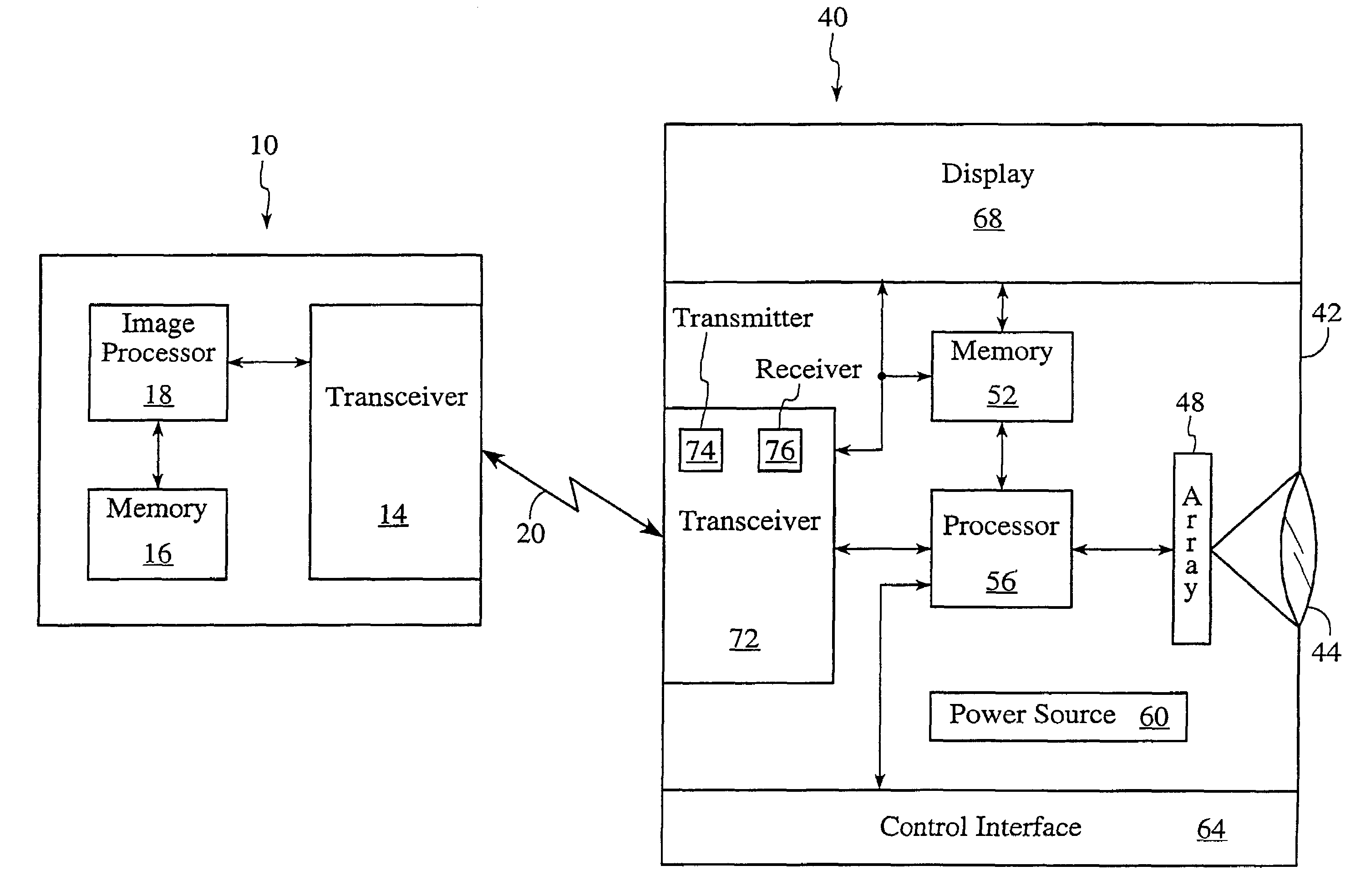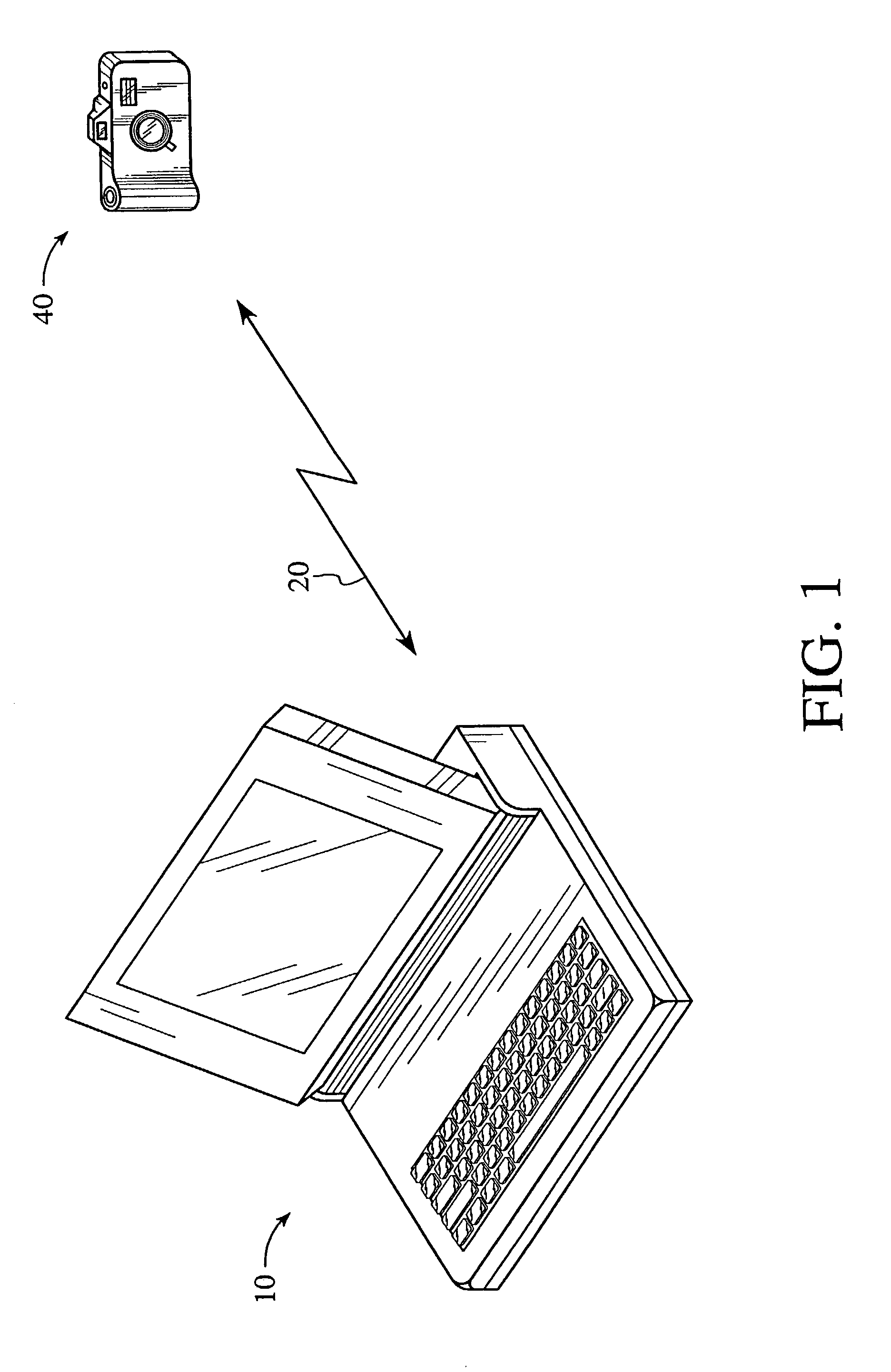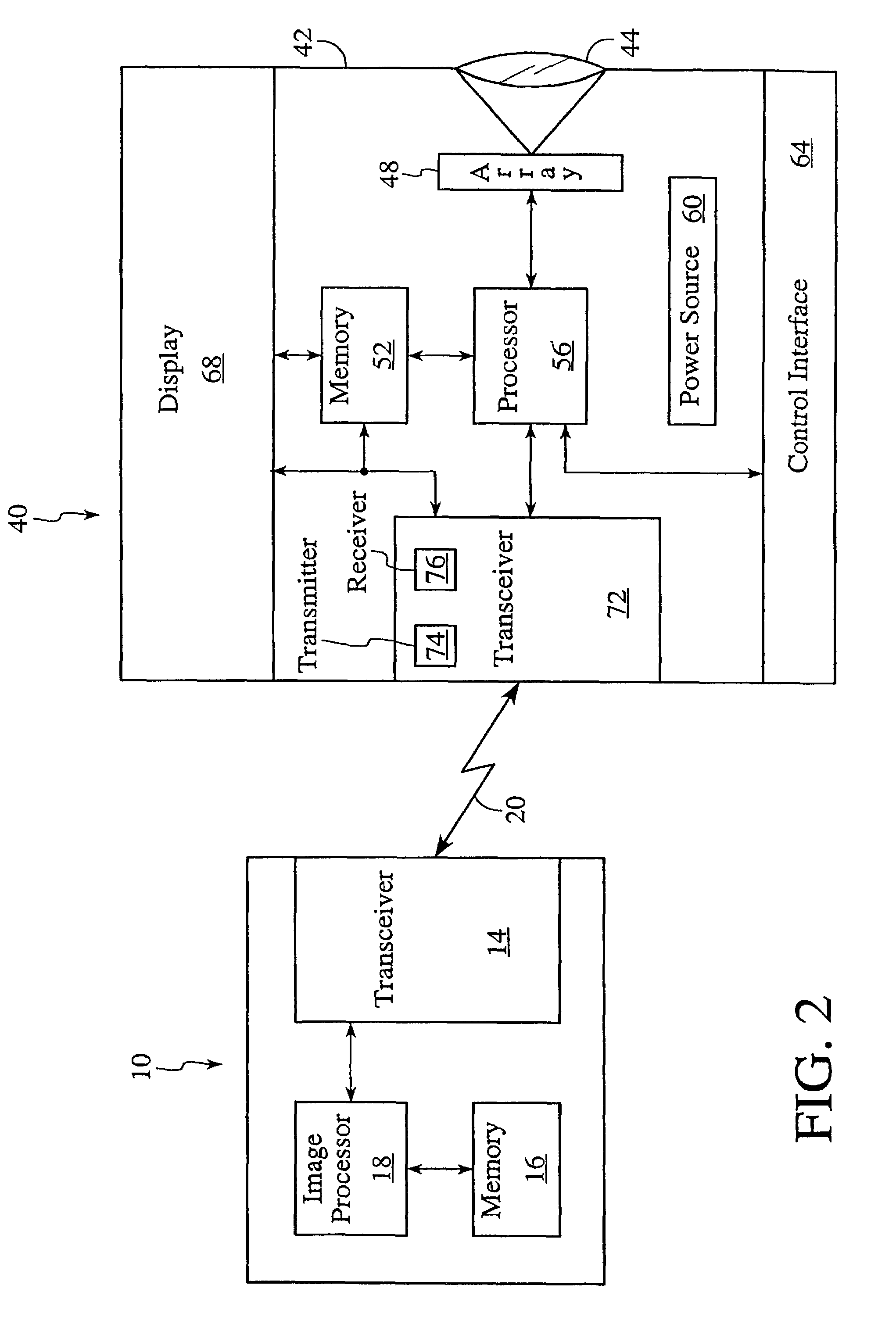Wireless hand-held digital camera
a digital camera and hand-held technology, applied in the field of digital cameras, can solve the problems of limited processing capacity, increased memory and processing limitations, and limited memory capacity for storing frames of digital image data within the camera, and achieve the effects of improving image data capture, processing performance, and high quality images
- Summary
- Abstract
- Description
- Claims
- Application Information
AI Technical Summary
Benefits of technology
Problems solved by technology
Method used
Image
Examples
first embodiment
[0033]Operation of the invention is described with the reference to FIGS. 2 and 3. In the embodiment, the hand-held digital camera 40 is used to capture image data that represents an image of a subject. The image data is captured at step 100 by directing the camera at the subject of interest and activating an image capture button. The captured image data may be compressed by the processor 56 and is then transferred, either directly or indirectly, to the camera transceiver 72, where the image data is processed for wireless transmission to the host computer 10.
[0034]In step 102, the camera transceiver 72 transmits the image data to the host computer 10 via the at least partially wireless communications link 20 that is established between the camera transceiver and the computer transceiver 14 located within the host computer 10. The computer transceiver immediately retransmits or “echos” related image data back to the hand-held digital camera 40, where the related image data is receive...
second embodiment
[0036]Operation of the invention is described with reference to FIGS. 2 and 4. In this embodiment, the hand-held digital camera 40 is used to capture image data that represents an image of a subject or scene. The image data is captured at step 120 by directing the camera at the subject or scene of interest and activating an image capture button. The captured image data is transferred, either directly or indirectly, to the camera transceiver 72 where the image data is processed for wireless transmission.
[0037]At step 122, the camera transceiver transmits the image data to the host computer 10 via the at least partially wireless communications link 20 that is established between the camera transceiver 72 and the computer transceiver 14 located within the host computer. The image processor 18 within the host computer receives the transmitted image data and at step 124 processes the image data into enhanced image data. The process of enhancing the image data is executed in continuity wi...
PUM
 Login to View More
Login to View More Abstract
Description
Claims
Application Information
 Login to View More
Login to View More - R&D
- Intellectual Property
- Life Sciences
- Materials
- Tech Scout
- Unparalleled Data Quality
- Higher Quality Content
- 60% Fewer Hallucinations
Browse by: Latest US Patents, China's latest patents, Technical Efficacy Thesaurus, Application Domain, Technology Topic, Popular Technical Reports.
© 2025 PatSnap. All rights reserved.Legal|Privacy policy|Modern Slavery Act Transparency Statement|Sitemap|About US| Contact US: help@patsnap.com



